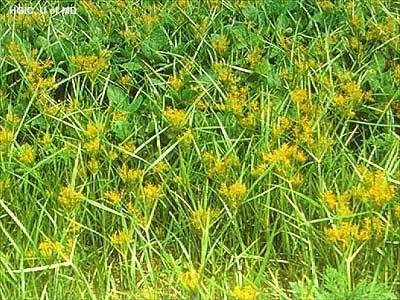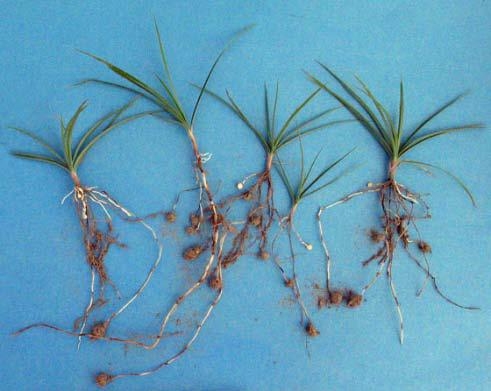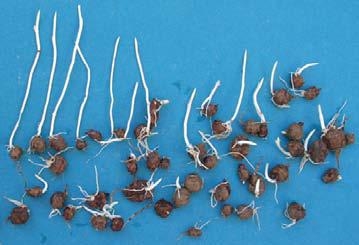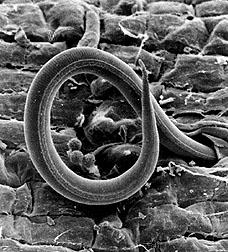Dec 5, 2011


An interesting video on this interaction can be viewed here: http://www.youtube.com/watch?v=E7ByJ3tFxDw


Should you apply a nematacide when spraying for nutsedge? I would say that you should not. In order to better protect the efficacy of chemical products we need to be aware of resistance management.
Pest management for nematodes:
- Plants affected by plant-parasitic nematodes may be stunted and have pale or yellow-green foliage.
- Extracting and identifying nematodes from soil samples or infected plant material is the best means for determining if and which nematode species are responsible for poor growth. The mere presence of nematodes in a sample does not mean they are causing plant damage. The nematodes must be identified and quantified correctly to determine if management measures are needed.
- Soil fumigation before planting can be effective against nematodes, but fumigants are expensive and generally not economically for all crops.
Important to remember:
- Sanitation - Cleaning machinery, tools and clothing after working in a nematode-infested field often slows the spread of nematode species into other areas. Since nematodes reproduce on certain weed species, weed control can significantly help slow population increase.
- Use of nematode resistant plant varieties - Nematode resistant plant material is available for many crops. Resistant varieties are not damaged severely by nematode infection and can reduce nematode populations. Use of nematode resistant varieties in problem fields can be effective and the least expensive way to avoid losses. However, when resistant varieties are overused, new pathogenic strains or races of nematodes may appear.
- Crop rotation/cover crops - Crop rotation to a non-host crop can reduce nematode populations from reaching economically damaging levels. However, it is necessary to positively identify the species of nematode in order to know what plants are non-hosts.
Resources
- UC IPM Pest Note Nutsedges: http://www.ipm.ucdavis.edu/PMG/PESTNOTES/pn7432.html
- UC IPM Pest Management Guidelines Alfalfa Nematodes: http://www.ipm.ucdavis.edu/PMG/r1200111.html